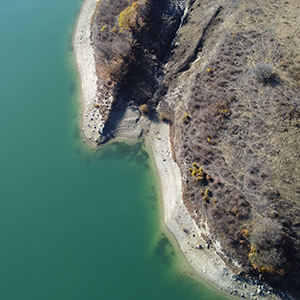Longitudinal recovery gradient of macroinvertebrates during different hydrological scenarios in a downstream river reach

Accepted: 12 May 2023
Figure S1. MFA_Complex_Full_Partial_axes: 100
Figure S2. MFA_Complex_Full_IND: 85
Table S1. Taxonomic distribution: 81
Table S2. PCA_Bio_St: 86
Table S3. Environmental variables: 83
Table S4. Daily flow time series: 87
Table S5. PCA_Hydro_St: 103
Table S6. PCA_Chem_St: 105
Table S7. MFA_Complex: 87
HTML: 36
All claims expressed in this article are solely those of the authors and do not necessarily represent those of their affiliated organizations, or those of the publisher, the editors and the reviewers. Any product that may be evaluated in this article or claim that may be made by its manufacturer is not guaranteed or endorsed by the publisher.
Authors
Macroinvertebrate community composition in regulated rivers is highly dependent on high and low flow events. Significant reduction or augmentation of the flow downstream from a dam can lead to a decrease in the variety of the sensitive macrozoobenthic taxa. Such decreases may lead to a degraded ecological status. In this research, the macrozoobenthic community was investigated in a river section downstream of a multipurpose dam with strategic significance for northeast Bulgaria. Samples were collected for five years from the Golyama Kamchia River, in close proximity to the Ticha dam. Three sampling sites were established in a longitudinal gradient, from 75 to 1770 meters from the dam. Sixteen invertebrate samples were taken between 2017 and 2021. Double sampling (spring and autumn) was conducted in 2019. The goal was to find how macroinvertebrate communities are influenced by the dam-induced modified environmental conditions, from the management of the dam, and which of the parameters is considered to have the strongest effect. Likewise for the study was important to understand longitudinal recovery gradients from the application of the present “minimum acceptable flow – compensation flow” in hydrologically differing years. The main physicochemical parameters were measured alongside the velocity of the water at each sampling site. Additionally, the maintained hydrological regime was explored for a relationship by several hydrological indices with the macroinvertebrate community composition. The analysis of the biological data through 7 biological indices showed that hydrologically sensitive taxa (Ephemeroptera, Plecoptera and Trichoptera - EPT) were very good indicators for damming impact, detecting disturbances not so well differentiated by other type-specific indices and the resulting ecological status. The order Trichoptera was the most influenced taxa group during the study. In 2020 the base flow released from the dam dropped to its lowest level (0.095 m3 s-1 from 0.552 m3 s-1) for an explored 10-year period of hydrology. This event continued for more than a year and led to a rupture of the previously observed recovery gradient. Downstream of the second sampling site, at about 800 m below the dam wall, a decrease in the number of trichopteran families was observed and at the third site, at 1.8 km from the dam they were significantly reduced.
Edited by
Alberto Doretto, Department of Environmental and Life Sciences, University of Piemonte Orientale "Amedeo Avogadro", Alessandria, ItalySupporting Agencies
Bulgarian Ministry of Education and ScienceHow to Cite

This work is licensed under a Creative Commons Attribution-NonCommercial 4.0 International License.
-
Stephany Toschkova, Sevginar Ibryamova, Darina Ch. Bachvarova, Teodora Koynova, Elitca Stanachkova, Radoslav Ivanov, Nikolay Natchev, Tsveteslava Ignatova-IvanovaBioRisk : 2024
-
Shiyun Chi, Juxiang Hu, Xianfu Zhao, Jun Hu, Sixin Li, Hongjun Wang, Lianfeng Zhou, Dewang LiEcohydrology : 2024
-
Kristina Gartsiyanova, Stefan Genchev, Atanas KitevHydrology : 2024
-
Dimitar D. Doychev, Lidiya R. TanevaLimnetica : 2025
-
Lidiya Taneva, Dimcho Zahariev, Dimitar DoychevActa Scientifica Naturalis : 2024

 https://doi.org/10.4081/jlimnol.2023.2125
https://doi.org/10.4081/jlimnol.2023.2125




